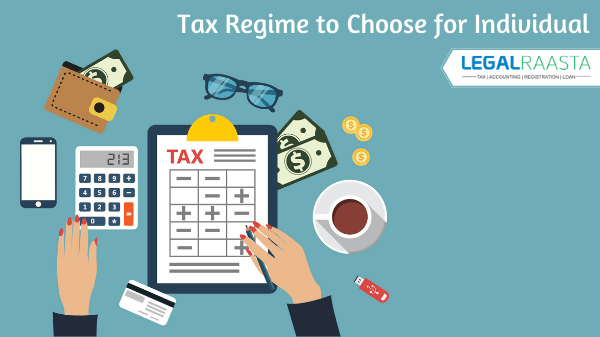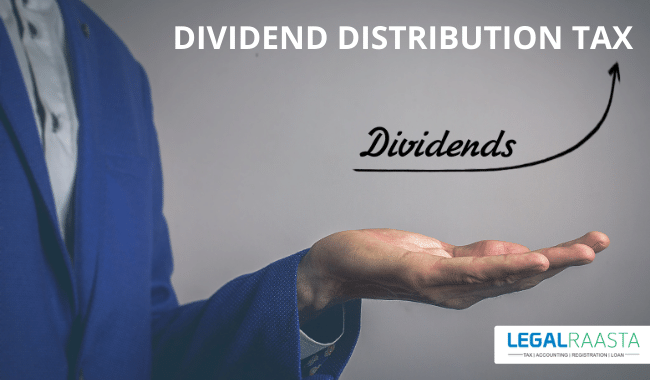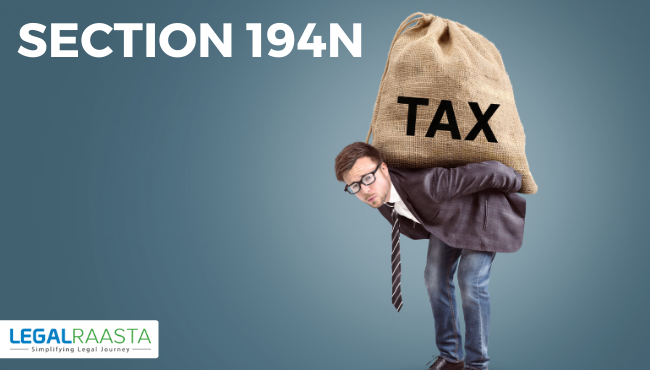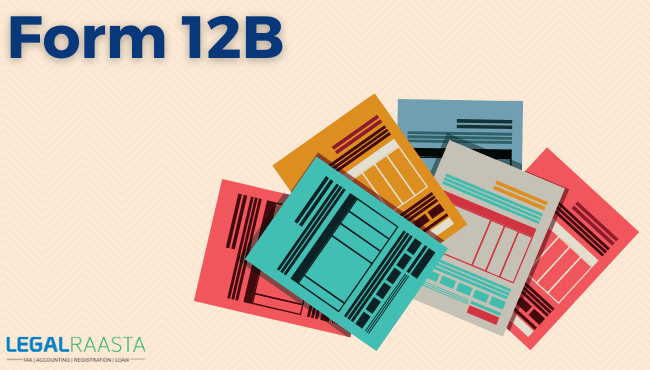Which Tax Regime to Choose for Individual: Old or New?
The CBDT (Central Board of Direct Taxes), through a circular dated April 13, 2020, announced that employers will have to deduct TDS from salary for FY2020-21 as per the tax regime – new or old – selected by the employee. If an employee wants to get his salary deducted through the new tax regime, then he/she must tell the employer about this, or else by default TDS would be deducted as per old regime tax rates.
TDS on salary is deducted as per the tax slab rates applied on your income whereas TDS on, for example, interest income from fixed deposits is deducted at only 10%. Also, once the selection of tax regime has been informed to the employer, the employee cannot change the selection of tax regime in that particular financial year. However, the circular stated that an employee will have the choice of switching the tax regime at the time of filing tax return (ITR).
For that, here are some things you need to consider while choosing your tax regime for TDS from salary for this financial year.
Steps to selecting the Tax Regime of your choice:
Step 1: Understand what works best for you
If your tax-free income is less than 5 lakhs or more than 15 lakhs, the tax rates are the same for both; that is why the old regime that allowed liberation is so appropriate
Step 2: Check for exemptions
For all the deleted releases, check how many apply to you and how much you can save by choosing those. This will help you in the next step.
Step 3: Do Math
Depending on the deduction/exemption of your taxable income, calculate the amount of taxable income under the old state and the new state.
Step 4: Go beyond the numbers
Apart from taxable income, lifestyle, stage of your life, short-term and long-term priorities and financial goals are good parameters for deciding which type of tax regime to choose. With inflation, rising purchases, and growing demand, it is important to start saving early and spend money wisely. The power of consolidation plays a major role in achieving your financial goals.
Step 5: Remember to plan carefully
It is important to note that it is possible to change tax regimes every financial year, as both will exist at the same time. First-time taxpayers – can decide to choose a new tax regime as it is easy to follow and translate to reduce tax debt. However, over time, investments have financial benefits and taxpayers will want to work for the old government because that will be of great benefit.
The current budget announcement has done more than provide adequate freedom of choice for each incumbent. It’s best to understand all the variables as you proceed with this list before switching. Freedom is yours, use it wisely.
Present Tax System – high rates but a lot of choices to reduce taxes
The current tax system is a little complex, to say the least. While tax rates are high, there are many ways to reduce your tax debt.
Over the years the government, by inserting clauses in the Income Tax Act, has given Indian taxpayers more than 70 exemption and deduction options with which they can defer their income and pay less.
While exemptions are part of your income, such as House Rent Allowance (HRA) and Leave Travel Allowance (LTA), deductions allow you to lower your tax rate by investing, saving or using certain items. The largest deduction is 80c where you can deposit your tax-free income at Rs.1.5 lakh. Apart from this, there are a few other categories that allow you to deduct tax deductions on items ranging from your loan interest (home and education) to the premiums you pay for health insurance.
The most common exemptions and reductions obtained by Indian taxpayers.
| Exemptions | Deductions |
| House Rent Allowance | Public Provident Fund |
| Leave Travel Allowance | ELSS (Equity Linked Saving Scheme) |
| Mobile and Internet Reimbursement | Employee Provident Fund |
| Food Coupons or Vouchers | Life Insurance Premium |
| Company Leased Car | Principal and Interest component of Home Loan |
| Standard Deduction | Children Tuition Fees |
| Uniform Allowance | Health Insurance Premiums |
| Leave Encashment | Investment in NPS |
| Tuition fee for Children | |
| Saving Account Interest |
Your taxable income can be reduced by lakhs through a combination of exemptions and deductions. However, it also means that you must find ways every year to optimize your wages and savings/investments so that you keep taxable income as low as possible.
New taxation – lower tax rates but no way to reduce taxes and More taxation
The new tax system is in two respects different from the current one.
One is that the tax burdens in the new regime have increased, together with rates of the 15 lakh sub-Rs have been reduced. Two, the new scheme will not be able to provide all the exemptions and deductions used by taxpayers under the current scheme.
This is a comparison of old and new taxation sheets
| Tax Slab(₹) | Old Tax Rates | New Tax Rates |
| 0 – 2,50,000 | 0% | 0% |
| 2,50,000 – 5,00,000 | 5% | 5% |
| 5,00,000 – 7,50,000 | 20% | 10% |
| 7,50,000 – 10,00,000 | 20% | 15% |
| 10,00,000 – 12,50,000 | 30% | 20% |
| 12,50,000 – 15,00,000 | 30% | 25% |
| 15,00,000 & above | 30% | 30% |
Income from Rs 5 lakh to 7,5 lakh, as can be seen from the new system, is 10 percent, whilst income from Rs 7,5 lakh to Rs 10 lakh is at 15 percent. The entire range of the current regime was 20 percent flat. The earlier Rs 10 lakh+ sheet where you paid 30% was split into three parts at 20 percent Rs 10-12.5 lakh, Rs 12.5 lakh-15 lach 25 percent and Rs 15 lakh, and then Rs 15 lakh and higher at 30 percent.
What If You Don’t Inform Your Employer About The Choice Of Your Tax Regime?
The CBDT circular has made it clear that if it’s not communicated by an employee, the employer should deduct taxes from salary income according to the old tax regime.
What this means is that if you have not communicated your decision for a particular tax regime in the month of April, then your employer will keep deducting TDS according to the old tax regime.
Moreover, if you do not show the proof of investments or announce how many investments you will be made in FY 2020-21, then this could lead to TDS from salary without the tax benefits.
If you inform your employer about your choice of the new tax regime in the month of June, then TDS from June to March (the end of the financial year) will be deducted according to the new tax rates subject to any amendments for extra TDS deducted for April and May which can be made by the employer.
Advance Tax
It doesn’t matter if you choose the old tax regime or the new tax regime, if your total tax liability on all income streams excluding the TDS is more than Rs 10,000 in the financial year, then you will have to pay advance tax.
Advance tax installments must be paid on time, if not, then an individual is liable to pay a penalty at the rate of 1 percent per month as interest on the tax amount due under the Income-tax Act.
As the Income-tax department may impose this interest if the total advance tax amount payable is not fully paid due to short-deduction of TDS by the employer, it is suggested that you should carefully make a plan of your annual salary taxation in advance and then make the right declaration to the employer on the selection of regime.
According to the IT laws, switching of tax regime at the time of filing the tax return is allowed. Taking into consideration the other incomes (like interest, etc.), an advance tax may be payable, if there is a short deduction of tax from salary if an employee selects the new tax regime for TDS from salary but changes to the old tax regime at the time of filing return.
If You Choose New Tax Regime For TDS From Salary
If you choose the new tax regime for TDS on salary, then keep in mind that your Form 16 will not have details of all the tax benefits and deductions that you may be eligible to avail if you choose the old tax regime at the time of filing ITR.
You must collect all the documents needed and compute the total amount of deductions that you are able to claim on your own. Although, you need not submit any documents to the tax department while filing ITR.
Old Tax Regime As Compared To The New Tax Regime
Ever since the circular was made public, taxpayers have been puzzled about if they should stick to the old regime which provides the benefit of exemptions and deductions, or change and choose the new regime which has low tax rates.
Taxpayers are still thinking about if the new personal tax regime will really provide significant tax relief.
The tax benefits that won’t be available as per the new regime include Section 80C deductions (Investments in PF, NPS, Life insurance premium), Section 80D (medical insurance premium), HRA, and interest that is paid on housing loan. Tax benefits for the disabled and for charities will also be removed.
While trying to help taxpayers make the right decision by computing and comparing their tax outgo under both the old and new tax regime, the income tax department has provided the system of an e-calculator on its e-filing website which can assist people. Just like the new tax regime has lower income tax rates, the old tax regime has income tax exemptions and deductions.
This calculator is only made to give a basic idea of the approximate impact of the new regulations. For the real provisions and eligibility, one has to go to the Income Tax provisions. All tax computations (includes cess) are excluding Surcharge and total claimable exemptions/deductions are considered to be zero in the new regime.
The approximate Annual Income is not applied for any Income with special rates. Deductions and exemptions are applicable according to the old regime. Before comparing and taking a decision regarding to your savings, ensure that you have a proper financial plan in place.
So, which tax regime should you choose?
Unfortunately, there is no single answer to this. And what creates the case is also the complexity of Indian tax laws.
While looking at tax cuts, the first response could be that the new system looks better. However, for these cuts, a person with Rs 7.5 lakh will have to pay Rs 25,000 and for those earning 10 lakh, tax savings will be Rs 37,500. But, as they say, Satan is asleep in the details. With this saving, you will have to release all the exemptions and deductions that can reduce this benefit.
While finding out which option you would like to find may seem complicated, if you talk about it in a systematic way, it is not difficult to find.
Here’s what you need to do –
- Count all the exemptions you get: If you stay employed, you will be looking for the HRA which is the greatest freedom a person can enjoy. Apart from that, other tax-free items include LTA, Food Bill, Phone Bills, etc. All of this will be taxable if you choose to switch to a new tax regime.
- Look for cuts you want: As a paid job, two cuts automatically get a standard deduction of Rs 50,000 and your contribution to your Employee Provident Fund (EPF). In the new state, you will not be able to claim this release even if you continue to contribute to the EPF. In addition, you cannot apply for your home loan deduction (if you have one) or insurance policies, which have so far helped you reduce your taxable income.
- Now combine these exemptions with deductions and deduct them from your salary to see what your taxable income is and what it would be like if you stopped this deduction. This should be a factor in deciding which government to seek.
Exemptions and rebates are available to the new tax government-
- A general deduction from rent under section 24 – 30% of the tax received
- Agricultural income: There is no limit
- Income from life insurance: If the insurance cover is ten times the annual premium
- Compensation for retrenchment: Rs 5 lakh
- VRS continued: Rs 5 lakh
- Leave at retirement: Rs 3 lakh (No limit for government employees)
- Proceeds from the maturity of the PPF (Public Provident Fund), Sukanya Samriddhi Yojana
- Interest earned on post savings account balance of Rs 3,500 per person per year
- Employee grant of up to Rs 20 lakh after providing five years of continuous service.
- Withdrawal from the National Pension Scheme (NPS) up to 40% of the proceeds from such withdrawals. Up to 25% in case of withdrawal of part of NPS.
Conclusion
As we said earlier, the changes introduced to make things for Indian taxpayers no easier. However, you have to be careful about one thing. The plan you choose should not decide whether to invest and obtain insurance. The reasons why you do not receive tax benefits from them are to attain your life goals and to secure the future of your family.LegalRaasta is an online gateway for analyzing legal compliances for Individuals as well as businesses. We further give the quickest and most effective legal registration for businesses like GST consultation, Food License, as well as, Company Formation with Trademark Filing. Moreover, our services extend to effective tax management such as GST returns, and Income Tax Returns ITR. Give us a call at +91-875-000-8585 with your demands.





